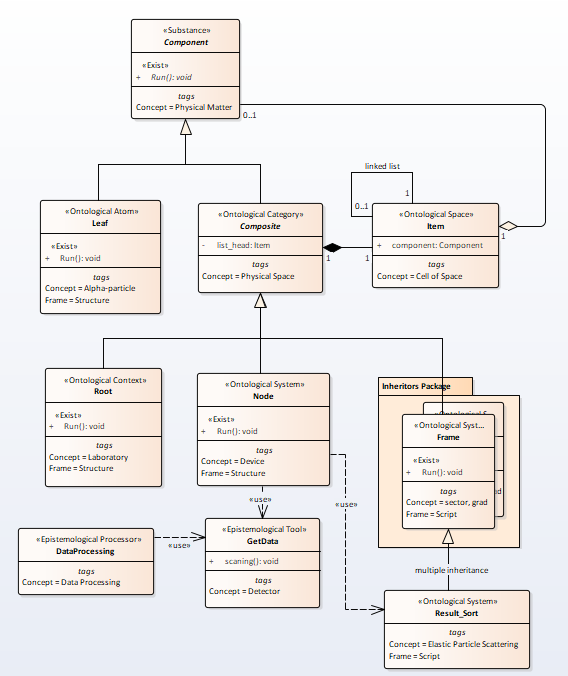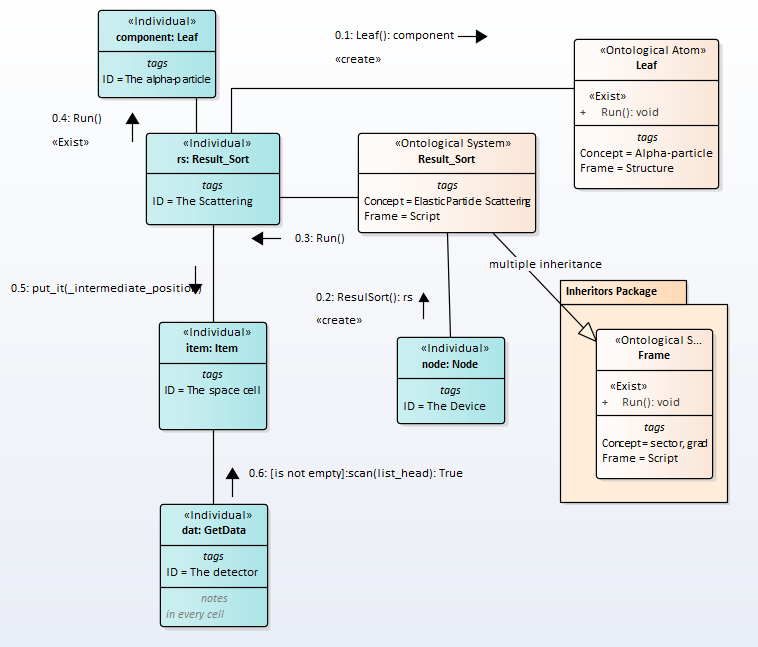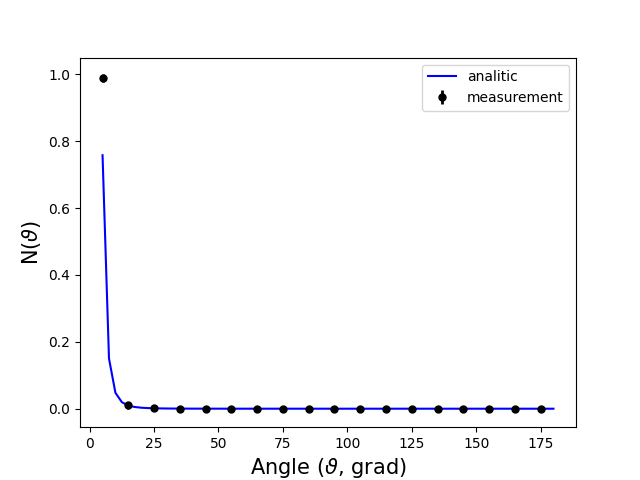Home
Ontologies in QM
View the Project on GitHub vgurianov/qm
1. Key points
• Wave function• Superposition
2. Main quantum effects
• Double-slit experiment• Uncertainty principle
• Entanglement
• Bell’s test
3. Other quantum models
• Rutherford scattering I• Rutherford scattering II
• Spin
• Turing machine
• Non-numerical models
• Discussion
Appendix
• Measurement error• Complex nambers
• Metaprogramming in Python
Rutherford scattering I. Quantum model.
1. Mathematical description
Let us consider the scattering of alpha particles by heavy metal atoms.
The scattering amplitude of fast charged particles on atoms is determined by the formula
\begin{equation}
A(\theta)=-\frac{ee_{1}}{2\mu v^2} \left( Z-F(\theta ) \right) cosec^2 \frac{\theta }{2},
\end{equation}
here \(F(\theta)\) is atomic factor, \(e\) is electron charge,\(e_1\) is an alpha-particle charge, \(\mu\) is mass of an alpha-particle, \(v\) is velocity alpha-particle.
Atomic factor for an atom with radius \(a\) is
\begin{equation}
F(\theta)=\frac{Z}{\left(1+K^2a^2 \right)^2}
\end{equation}
The differential scattering cross section is
\begin{equation}
\sigma \left(\theta \right) = \frac{e_1^2e^2Z^2}{4\mu^2v^4}\left(1-\frac{1}{1+4k^2a^2sin^2\frac{\theta }{2}} \right)^2cosec^4\frac{\theta }{2}
\end{equation}
If \(ka\gg1\) (fast particle) then we get the Rutherford formula
\begin{equation}
\sigma \left(\theta \right) = \frac{e_1^2e^2Z^2}{4\mu^2v^4}cosec^4\frac{\theta }{2}
\end{equation}
This formula coincides with the formula for elastic scattering of charged particles in the Coulomb field of a nucleus.
For alpha-particles, we get (\(e_1 = 2e\))
\begin{equation} \sigma \left(\theta \right) = \frac{e^4Z^2}{\mu^2v^4}cosec^4\frac{\theta }{2} \end{equation}
2. Semantic Net Description
For scattering, an ontology is depicted in the picture Fig.1
 Fig.1. The ontology of the scattering
Fig.1. The ontology of the scattering
The message exchange order will be as follows,Fig.6.

Fig.2. Sequence of messages
3. Experiments result
Typical result of the experiment is depicted in Fig.3 (kn = 10 measurements for each value \(\varphi\)).
 Figure 3 - Experiment result
Figure 3 - Experiment result
The complete code is here https://github.com/vgurianov/qm/software/scattering_q.py.